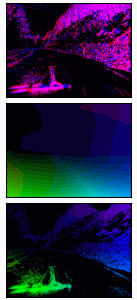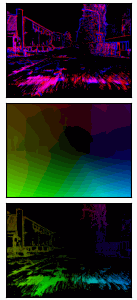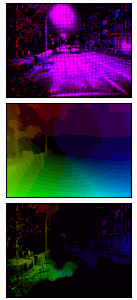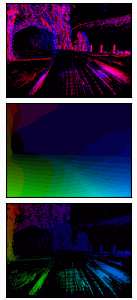类脑感知与计算研究组 NSC Group
Homepage Research Teaching Contact Us
Group Introduction
Welcome to the website of the Neuromorphic Sensing and Computing (NSC) Group, led by Hongzhi You. Our lab is part of Center for Visual Cognition and Brain-Inspired Computation in the Key Laboratory for NeuroInformation of Ministry of Education at the University of Electronic Science and Technology of China (UESTC).
Our mission is to research the fundamental challenges of neuromorphic sensing and computing. Our primary focus lies in investigating the underlying computational theories that have the potential for application in industrial intelligent perception and cognitive reasoning, drawing inspiration from brain and cognitive neuroscience.
Research interests
Event-based Vision
Event-based cameras (the Dynamic Vision Sensor: DVS) are bio-inspired vision sensors that asynchronously provide per-pixel brightness changes as an event stream. Leveraging their high temporal resolution, dynamic range, and low latency, these cameras have the potential to enhance intelligent perceptions related to motion, such as optical flow. Compared with the traditional frame-based methods, new algorithms that exploit the high temporal resolution and the asynchronous and sparse event stream are required for fast intelligent perceptions. Their potential applications include optical flow and depth estimation, SLAM etc.
 |  |  |  |  |
|---|---|---|---|---|
Neuro-vector Symbolic Architecuture for Perception and Reasoning
Vector Symbolic Architectures (VSAs), also known as Hyperdimensional Computing (HC), are regarded as a powerful algorithmic framework that leverages high-dimensional distributed vectors and employs specific algebraic operations and structured symbolic representations. In the neuro-symbolic architecture, Marcus argues that human cognition involves three basic components: representations of relationships between variables, structured representations, and representations between individuals and kinds. The neuro-vector symbolic architecture, combining advantages from powerful operators on VSAs and learning capacity in neural networks, can achieve perceptions and reasoning systematically with computable and interpretable semantics.
Neuromorphic Computing and Computational Neuroscience
Neuromorphic Computing, is a field dedicated to the reverse engineering of cognitive brains. The objective is to efficiently simulate biological neural networks on hardware by leveraging physical properties similar to transistors and neurons. This discipline aims to develop new technologies based on principles of the nervous system, characterized by real-time processing, low power consumption, and brain-like computation. Neuromorphic computing has evolved into an interdisciplinary frontier involving neuroscience, mathematics, physics, electronics, and computer science.
In addition, computational neuroscience uses mathematical models to conduct quantitative analysis and research on biological neural system, its research results are of great significance to guide the design of neuromorphic circuit system which is closer to biological brain. In our lab, utilizing a Field Programmable Gate Array (FPGA) as the hardware platform, a multi-core continuous attractor neural network (CANN) neuromorphic system with rich biologically inspired neural characteristics has been designed and implemented. Multiple cognitive tasks have been simulated on the FPGA CANNs, such as silent working memory task, T-maze decision making task etc.
Contact Us
Welcome to contact us and apply if you are interested in the research directions mentioned above for postgraduate studies. We also welcome applications for Dual Master’s degree program in BME (University of Electronic Science and Technology of China/UESTC) and Neuroscience (McGill, IPN). Second- and third-year college students, who are interested in the aforementioned research directions, are welcome to participate in project internships.
Contact information: Hongzhi You; Email: hongzhi-you (at) uestc.edu.cn
@NSC Group | 蜀ICP备2022003279号-1